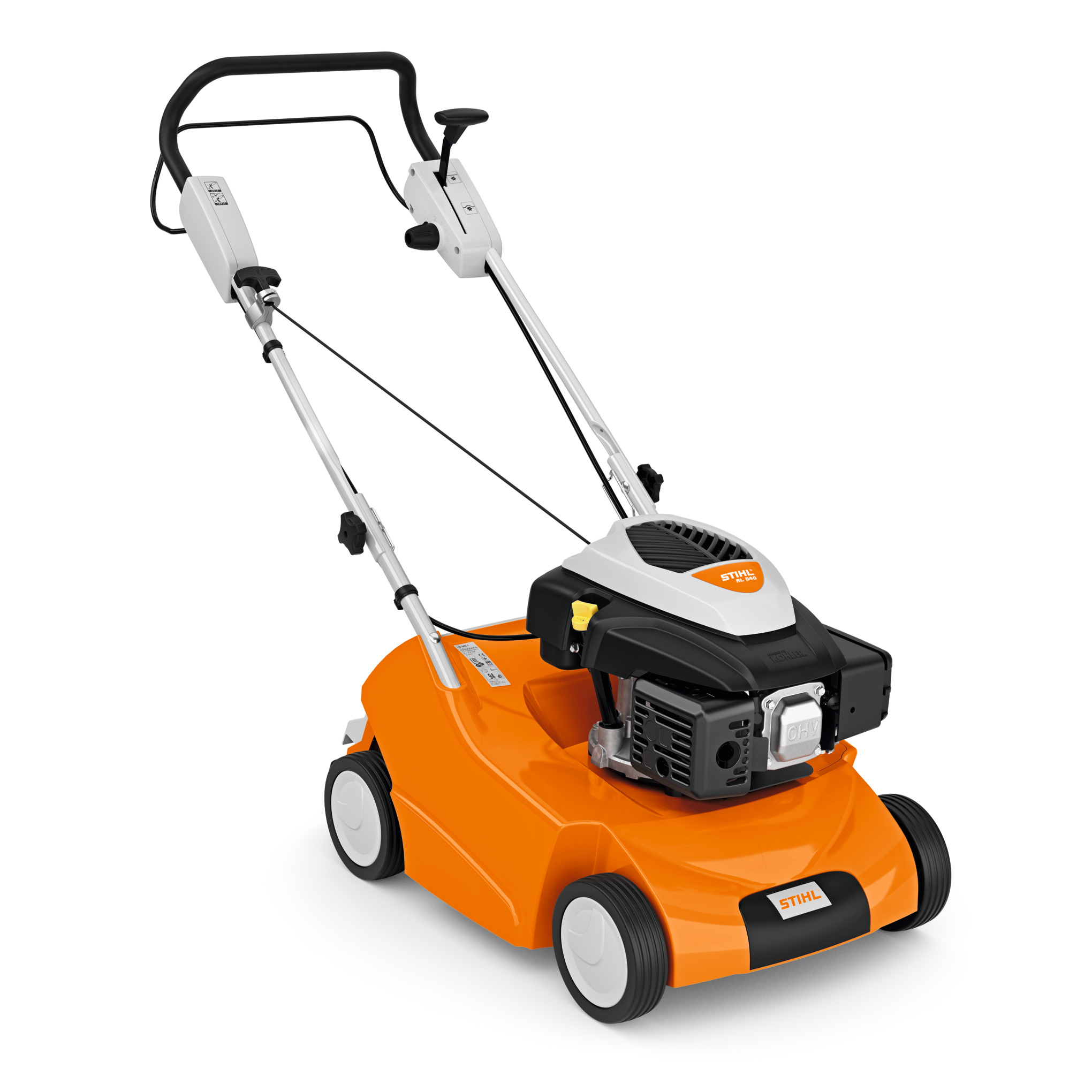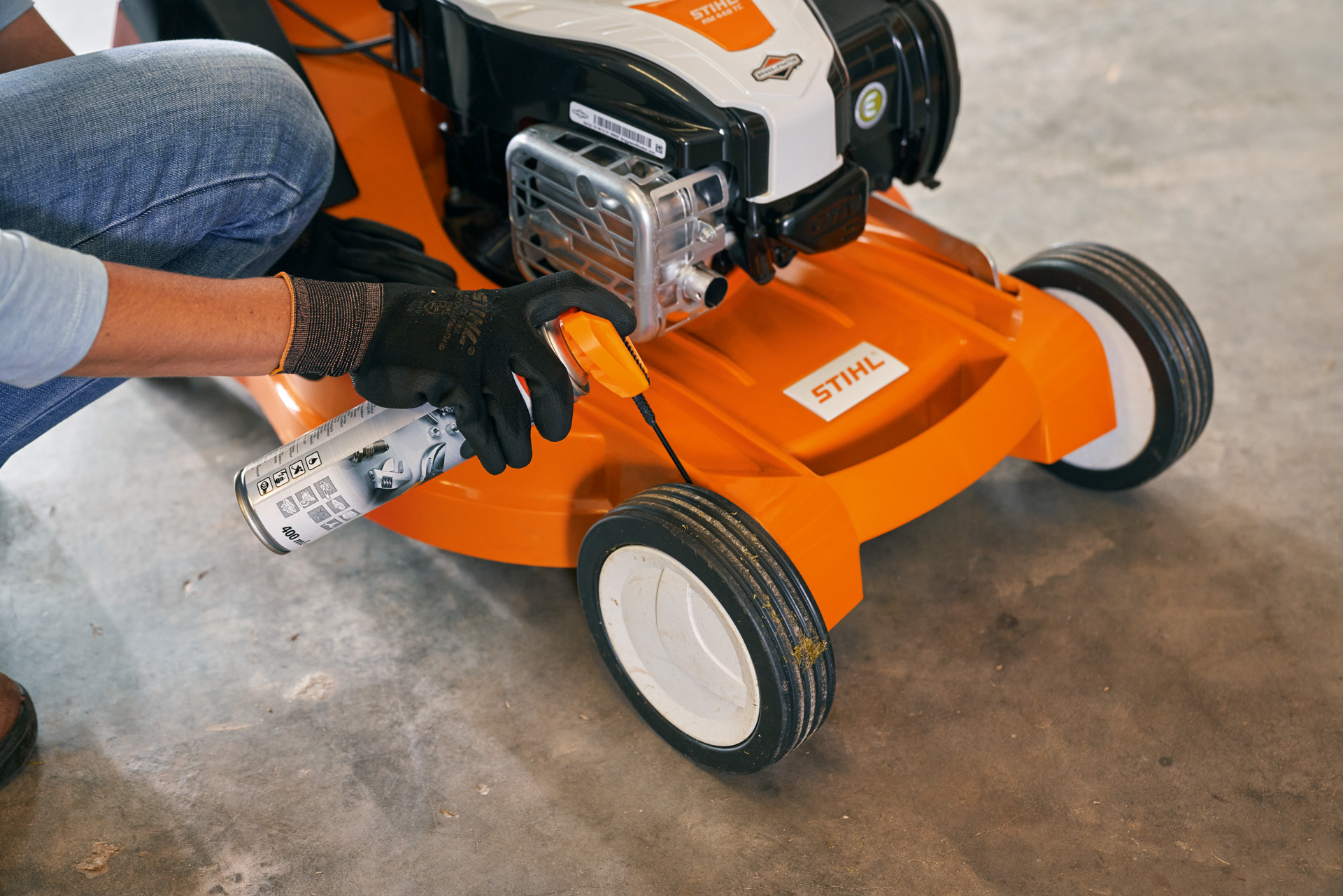How to scarify a lawn
Lawn scarification improves the health of your lawn by removing thatch from it. Our guide explains the best time to do it, and just how it works.
07.03.2025

Why should I scarify my lawn?
Scarifying refers to the process of using a tool to clear matted grass and moss from the surface of your lawn and lightly opening up the ground to add air and improve growth. Verticutting is similar, though it has less impact on the soil itself. Left alone, debris and dead matter in grass can form a matted layer of thatch that will prevent water from reaching the roots and eventually suffocate the lawn.
How does scarification work?
To scarify your lawn, you can use a scarifier that cuts vertically through the lawn and thatch, and shallowly scores the surface of the earth. You can achieve a similar effect using just a rake, but it is back-breaking work! We recommend scarifying tools with rotating blades that penetrate a few millimetres into the soil to remove moss, thatch and weeds. The process can make a bit of a mess of the grass at first, but it rejuvenates your lawn for the long term, making it easier for air, water and micronutrients to reach the roots.

The best time to scarify
April and May are the best months as your lawn is growing strongly, but you can scarify between March and May, and in September, depending on the weather. You should ideally scarify your lawn twice a year, but not when the ground is cold – it should be at 10°C or more. Equally, if the weather gets too hot, it’s best to postpone scarifying to prevent the lawn from drying out.
Scarifying in spring
Spring is the best time of year to scarify a lawn. As soon as temperatures are consistently above 10°C and the grass is growing vigorously, the lawn should be strong enough to scarify – after it has been mown three or four times since the beginning of the year. Start your lawn care by scarifying, followed by the first fertilisation of the season to prepare your green space for the new gardening season. Aim to scarify your lawn in April or May because the soil recovers very quickly at that time of year.
When should I scarify my lawn for the first time? It usually takes three years before a freshly laid lawn achieves sufficient growth and hardiness for scarifying – any sooner, and there is a risk of damaging the young grass roots. You could scarify as early as the second year but only if your new lawn has grown particularly thickly.

Scarifying in autumn
Although scarification and aeration of your lawn will help control stubborn weeds and matted moss, it also puts stress on the soil. This is why any late-summer lawn scarifying should certainly be done with a lighter touch. Your lawn needs a chance to recover well so it can enter its winter dormancy with renewed strength.
When not to scarify
- Avoid scarifying your lawn at the height of summer or when it’s very hot.
- If it’s raining or the soil is very wet, wait for conditions to change before you scarify – sodden, heavy soil is not easy to work with and will not aerate as you want it to.
How often do I need to scarify my lawn? A strongly growing lawn with no matted thatch does not necessarily need to be scarified; simply raking through to dislodge any dead grass is enough. If you do have matting or moss growth in your grass, you should scarify your lawn twice a year at most.
Air and light for a beautiful green space

Lawn scarifiers from STIHL
Have moss, weeds, or thatch made themselves at home in your lawn? Then it’s time to step up and take serious action. Powerful scarifiers from STIHL are the go-to lawn care tool for healthy green grass. They score the earth while removing dead matter that inhibits grass vitality, delivering increased light and nutrients to the grass in a single work step. With a STIHL lawn scarifier, you can rejuvenate your lawn and lay the groundwork for your own peaceful oasis.
Scarifying tools
In return for regular care and removal of moss, weeds, and thatch, your lawn will reward you with strong, beautiful green growth. Let one of our cordless or petrol-driven lawn scarifiers make your task much easier – you will particularly feel the benefit if you have heavy soil or a lot of thatch in your lawn. Manual scarification tools are also available if you are willing to put in some extra work.
How does a scarifier work?
Scarifying tools have rotating blades that penetrate through the lawn and a few millimetres into the ground below, aerating the soil as they pass through and facilitating the easy removal of weeds and intruding roots.
Selecting the right scarifier
You can easily scarify small areas of lawn with a manual scarifier, but if you need to scarify larger areas, we recommend you get some extra power behind you: a STIHL cordless or petrol-driven scarifier will make easy work of clearing thatch and invigorating your soil.
Battery-powered or petrol-driven scarifier? An battery scarifier from STIHL is ideal if you have a lawn up to 250m2 and nearby neighbours that you don't want to disturb. If you have a larger lawn, a STIHL scarifier with a powerful petrol engine is also available.
The advantages of using a scarifier
- Saves time and energy Even if you have heavy clay, very dry soil or a large expanse of grass, these tools help you tackle a labour-intensive task with less effort.
- Consistent working depth The precisely adjustable blades mean that your lawn is scarified evenly, smoothly and gently.
- Quick and effective Whether you’re using an battery-powered or petrol-driven scarifier, even large lawns can be aerated in a single pass with ease.

How to scarify a lawn
Scarifiers have very sharp blades, so before you actually get going, it’s important to make sure they are correctly adjusted. If you scarify with the blades in the wrong position, you can badly damage your lawn.
Set the depth of your scarifier correctly
The right working depth to scarify at depends on the age of the lawn and the extent of matting. As a rule, the blades should not rip the ground open but rather just lightly skim the soil. Keeping that in mind, adjust the blades so that they penetrate the ground to 2 to 3 mm, testing the depth on a small section of the lawn and readjusting if necessary. A very neglected lawn may even handle 4 mm, but to avoid permanent damage, you should never scarify grass more deeply than that.
Scarifying: step by step
- Before scarifying, mow the lawn to a height of around 2 to 3 cm.
- Adjust the scarifying blades to the correct depth.
- Be sure not to scarify too deeply.
- Start by evenly working over the whole lawn in one direction, then turn 90 degrees and go across the whole area again.
- Move quickly and evenly over the lawn without pausing, so that you don't damage the turf.
- Make sure there are no large stones in the path of the scarifier.
- If you are using a tool without a grass catcher box, remove the loosened thatch afterwards with a rake.
After scarifying
When you’ve finished scarifying, your lawn may not look its best at first, but before long, you will have lusher, more beautiful grass. A good lawn care tip is to apply sand or fine compost and fertiliser to your lawn after you scarify it. Overseeding is only necessary if there are larger bare patches of lawn.

Summary: how to scarify a lawn
- Scarifying removes matted thatch and moss for improved aeration and irrigation of lawns
- The ground should be scored, but not too deeply
- The best time to scarify is in spring
- Scarify once or twice a year, depending on how much lawn thatch you have
- Scarify young lawns after two years at the earliest, though normally after three years
- Powered scarifying tools are efficient and require less physical effort
- The blades should not penetrate the soil more than three to four millimetres
- Mow the lawn before you scarify it
- Work the scarifier lengthwise and then crosswise over the lawn
- Fertilise and top dress the lawn with sand or compost after you scarify it



